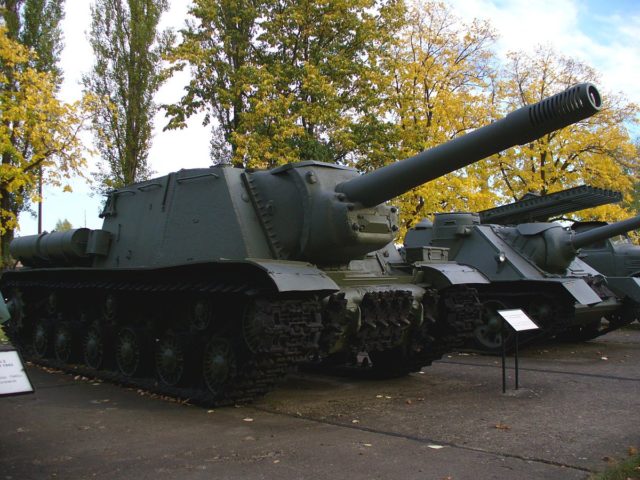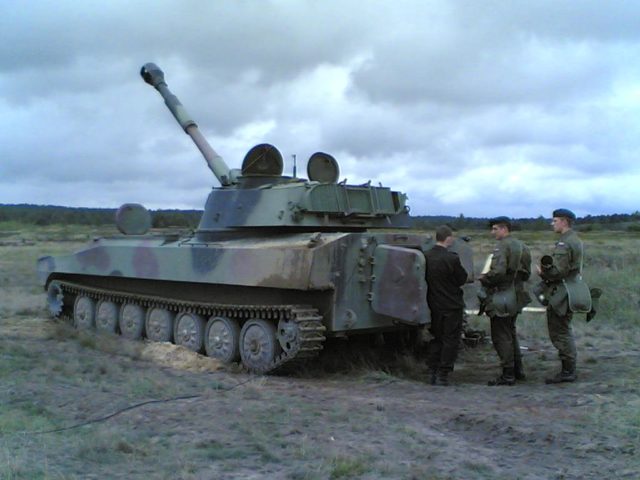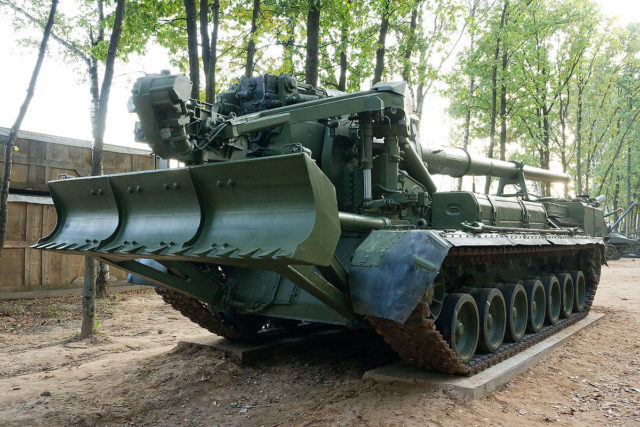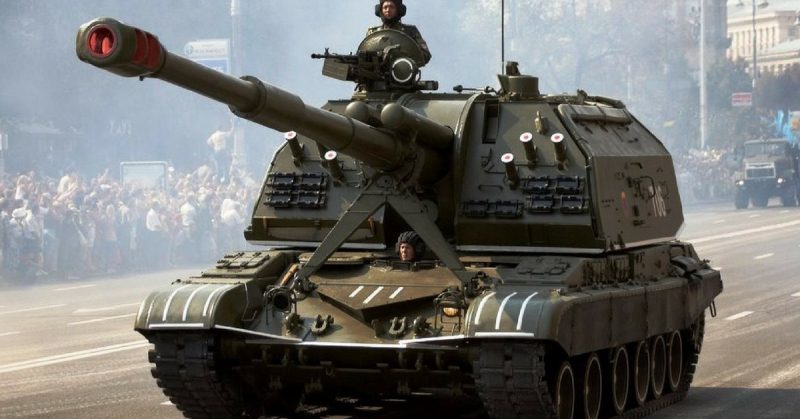The Russian army referred to artillery as “the god of war.” Its destructive power not only shattered enemy formations but also transformed the shape of battlefields where it was used.
Despite their adoration, self-propelled artillery was neglected by the Soviet Union. Overlooked in favor of vehicle-mounted armament, it did not emerge from its underdog status until the late 1960s. Along the way, some effective weapons were produced.
WWII Weapons
Self-propelled artillery emerged during the period of experimentation in fighting vehicles in the lead up to WWII. In Stalin’s Soviet Republic, standardization was key, and a strong emphasis was put on the mass production of tanks, rather than on a variety of vehicles as other nations tried.
During WWII, the Soviets became enamored with rocketry. Seeking mobile systems to indirectly rain destruction down on their enemies, they turned to multiple rocket launchers, nicknamed Katyusha. There were no self-propelled howitzers or mortars.
The necessities of war forced them to create some self-propelled artillery. To challenge German tanks, the Soviets built a self-propelled anti-tank gun, the SU-76. Hastily designed and produced, it used a modified T-70 tank body and an adapted version of the ZIS-3 76mm gun. It went into action in early 1943 but had been too hastily made. Inadequate for taking on tanks, it was used instead as an infantry support vehicle.
Also based on a tank chassis, the ISU-122 and ISU-152 followed the SU-76 into the war. They were equipped with heavier guns enabling them to fulfill both anti-tank and artillery roles successfully.
As the Cold War began, those machines remained in service. With the USSR so focused on rocketry, it was not until the 1960s that the next generation of significant self-propelled artillery emerged.

The 1960s: A Change in Approach
The reign of Nikita Khrushchev, another advocate for rocketry, ensured the dominance of rockets in the Soviet military up until the mid-1960s. Following his removal from office, the situation changed. The way was open for a wider variety of self-propelled artillery.
One of the most significant results was the 2S1 Gvozdika. A self-propelled howitzer, its first prototypes were made in 1969, and it entered service in 1970. The Gvozdika’s main armament was a 122mm howitzer, based on the D-30 towed howitzer. It provided greater mobility to an existing gun as well as greater protection for its crew. The howitzer could be angled for either direct or indirect fire, varying its usefulness.
The variety of options added to the Gvozdika showed how military vehicles had improved since WWII. As well as high explosives and smoke shells, it could discharge chemical ammunition or rounds that extended its 15.3km range to nearly 22km. It had infra-red equipment, different tracks depending on the terrain, and could be adjusted to make it shorter for transportation on aircraft.

Building Up Artillery
A range of different self-propelled artillery weapons followed.
The 2S3 Akatsiya was another howitzer, this time carrying a 152mm gun. It combined a powerful engine with improvements in tracks and suspension to help it get around the battlefield. It was usually loaded using ammunition passed in from the outside through rear hatches. The 33 rounds carried inside the hull were kept for moments of necessity. It could fire a greater variety of rounds than the Gvozdika, including incendiary, flechette, and scatter mines. Later versions of the vehicle added more ammunition and a more advanced targeting system.
The 2S4 Ty ulpan’s main weapon was a 240mm mortar, carried on a chassis adapted from a minelaying vehicle. Before firing, the mortar was rotated on a hinge at the rear so that it rested on a base plate facing away from the vehicle. It was the first piece of Soviet self-propelled artillery to fire nuclear rounds.
Also introduced in the early 1970s, the 2S5 Giantsint-S was a vehicle with a 152mm artillery gun mounted on its roof. It could be fired both directly and indirectly and was again equipped with a range of rounds, as well as both direct and indirect sites. A large spade was deployed from the rear to make it more stable when firing.
The 2S7 Pion added a larger caliber 203mm self-propelled gun to the range. Entering service in 1975, it also carried a surface-to-air missile system. Like the 2S5, it had a rear-mounted spade to stabilize it when firing. It had a range of 37.5km or 47.5km with rocket-assisted ammunition.

The 1980s
In 1981, a new and highly flexible self-propelled gun entered service – the 2S9 Nona. The Nona consisted of a 120mm gun/mortar mounted on the body of a BTR-D armored personnel carrier. It was amphibious, could be airdropped, and had protection against nuclear, biological, and chemical weapons. It could be used for both direct and indirect fire, including anti-tank duty. While it’s maximum range of just under 9km was less impressive than some other artillery, it was a useful weapon.
In 1989, a replacement for the 2S3 and 2S5 came into service. It was the 2S19 Msta. It carried a 152mm howitzer with a maximum range of just under 25km. 50 rounds were kept inside the vehicle, although it was usually loaded with ammunition supplied from outside. A machine-gun and smoke grenade launchers provided extra protection.
Soviet-made vehicles were joined by the Czech vzor 77 Dana. With a 152mm self-propelled gun/howitzer, the Dana had an eight-wheeled chassis rather than a tracked one. It made it less mobile but cheaper and was considered adequate for its role serving from behind the lines.
By the end of the Cold War, the Soviet Union and its allies had a broad range of self-propelled artillery. Rockets remained important, but their days of relying on them were over.
Source:
Ian V. Hogg and John Weeks (1980), The Illustrated Encyclopedia of Military Vehicles
Russell Phillips (2017), Tanks and Combat Vehicles of the Warsaw Pact
